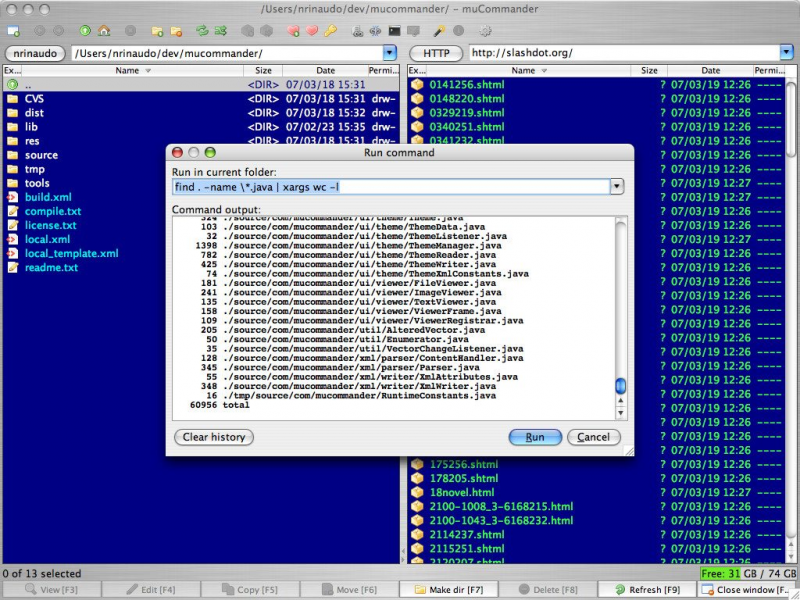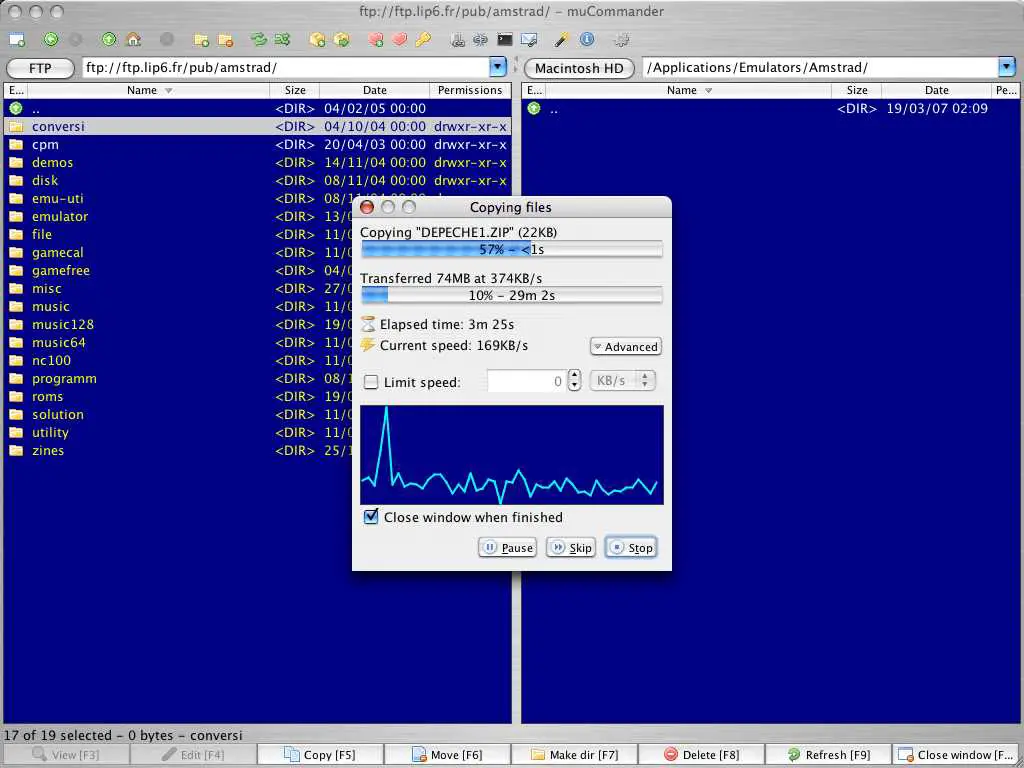

For example, if you find yourself often toggling hidden files, or copying file paths, or frequently performing operations on multiple files, you may be in for a treat. On the other hand, the best reason to use it is that there may be a better workflow just clicks away. In fact, the best reason not to use Commander One is that you’ve probably learned to live with all the limitations of your existing file manager. When I need to select all JPGs in a folder in the past, I just sorted by “Kind” and grabbed them all.


I don’t know when I’d need to search for files in a directory using a regular expression. It can do so much that it’s almost overwhelming, and in many cases, I found myself awing at the power without a specific use case in mind. The biggest challenge with Commander One is the learning curve of just how much can be done with it. You can even use regular expressions for file selection. You can queue large, disk-intensive operations for delayed execution, which can be critical, especially if you’re still using a platter hard drive. You can perform a mass rename when you move files.
#Freebsd mucommander windows#
Managing files is significantly easier when, rather than using separate windows which can easily lose their way in the active stack, folders are locked side-by-side. Commander One, conversely, is “dual paned,” which means that rather than tabs, you can actually see multiple folders side by side. But their limit, obviously, is that they aren’t side by side for comparison, and they don’t make the draggability of files obvious. These tabs, like a browser, enable you to run multiple Finder “views” at once. With 10.9 Mavericks, OS X introduced Finder tabs. What you can do, and I have done, is set Commander One to launch as a Login Item. The file picker from “Open” and “Save As” dialogs? The box that opens when you mount a disk image or another volume? That’s Finder. The first thing you’ll notice when you launch Commander One is that it’s is a Finder “alternative,” not a Finder “replacement.” That’s because the Finder cannot be fully replaced anymore than Windows Explorer can be: it’s a low level system component, integrated into virtually every aspect of OS X. Swift is still young, so it’s exciting to see a production quality application written in language not only because of its speed, but also because it serves as a proof of concept: real apps can be written in Swift. And in that view, it’s a great tool.Ĭommander One is also written entirely in Swift, Apple’s new development language.
#Freebsd mucommander software#
Given that, I think we should view Commander One as a software aimed at the already skilled user. Here’s why I think that’s okay: Commander One is already targeting a subset of OS X users: if you’re looking for a file manager alternative, you’re probably not someone who is going to obsess about the numerous options or the use of ‘advanced’ terms like symlink or source/target. Along with those options, of course, comes increased UI complexity. Commander One is an attempt to address those missing features. Those comfortable at the terminal know that OS X, with its UNIX underpinnings, is much more powerful than its GUI cousin the Finder would have you believe. Power users across the world celebrate and vilify the Finder, both for being a flexible file manger and for being needlessly cut off at the knees. Let’s dig in and see what Commander One has to offer. Enter “ Commander One,” a dual-pane file manager that seeks to fill in the holes that the Finder has famously left. While replacing HFS+ remains out of our reach, an alternative to the Finder for day-to-day tasks has been achievable for some time. For all of the strengths of OS X, two of the complaints recycled year after year are the aged filesystem, HFS+, with its lack of file integrity, and the file manager, the Finder.


 0 kommentar(er)
0 kommentar(er)
